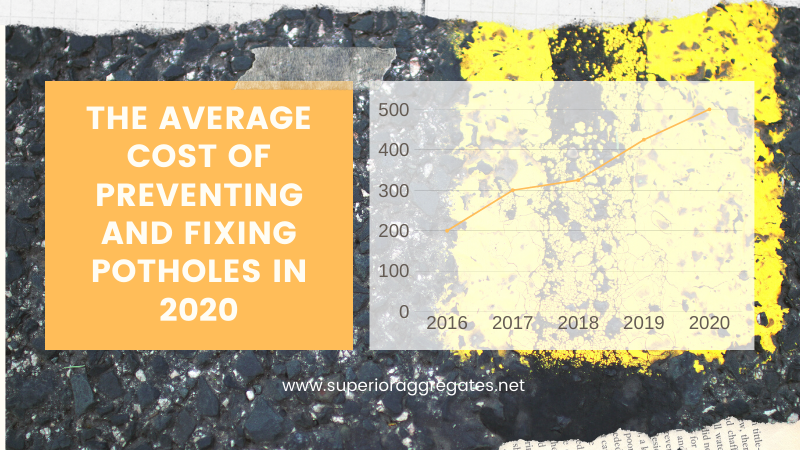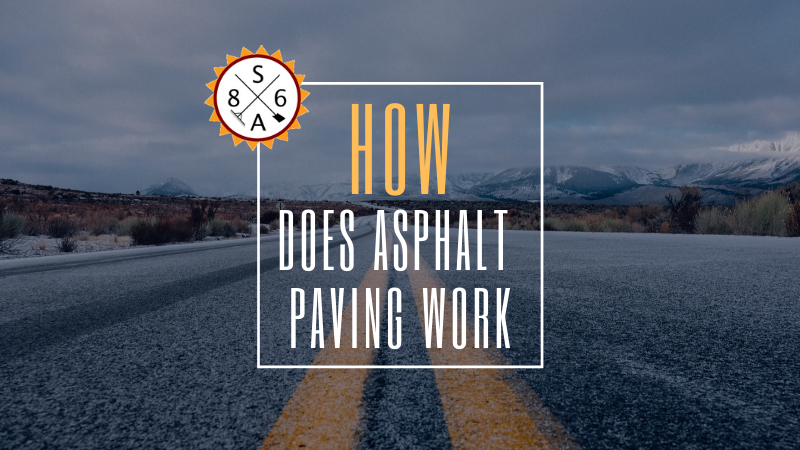
THE AVERAGE COST OF PREVENTING AND FIXING POTHOLES IN 2020
Pothole repair can be quite frustrating but it doesn’t have to be. By being proactive and fixing asphalt cracks, you can prevent potholes from occurring in the first place. However, if you need to fix potholes in the area where you live, there are professional options you can use. In this article, we’ll go over the basics behind how potholes are made and what the average cost of preventing and fixing potholes is in 2020.
How Potholes Are Made
Understanding how potholes are formed in the first place is one key to preventing them in the future. They are caused by the expansion and contraction of groundwater that is located underneath the pavement and can begin to form during the winter season thanks to the expansion of this groundwater that freezes as a result of the cooler temperatures. This expansion underneath the pavement causes cracks in the asphalt. Over time, as more cars and trucks pass over this area, the concrete material continues to weaken. This forms a hole that can trap melted water. This melted water can then freeze again and begin a cycle that leads to the expansion of the now formed pothole.
Pothole Fixing Costs
If this cycle has had enough time to repeat over and over and over again, you might find yourself face to face with a major problem, be it on your driveway, sidewalk, or roadway in front of your home. Especially with the winter here and cooler temperatures upon us, that groundwater has had time to freeze over and produce cracks in the pavement. The amount you pay depends heavily on the severity of the pothole which is why it is important to take notice of and fix asphalt cracks early on.
But going back to the matter at hand, the cost to fix pothole in 2020 will typically be around $100 to $350. Additional asphalt sealing costs can range from $200 to $600 and, again, depends on the severity of the pothole. Because fixing a pothole in freezing conditions, it is not for the faint of heart. Your best bet is to hire a trained professional that has experience with a wide range of pothole and asphalt crack issues. In addition to how large the pothole is that you are looking to fix, the quality of the materials, the slope of the pothole, and piping that needs to be taken into consideration and worked around can factor into raising costs.
Taking Preventative Measures
As we mentioned, pothole repair is not easy and you will be dejected after you find out that you’ve incorrectly filled the pothole with the wrong amount of concrete. However, by taking stock of your current driveway’s wellbeing, you can prevent potholes from occurring in the first place by dealing with those initial cracks. Even better, try finding the source of groundwater leakage and prevent it from freezing underneath the pavement. Some other precautionary measures you can take include repairing the crack as soon as possible with infill and overbanding to prevent water from entering the pavement and softening the material. Overbanding uses a thermoplastic material to stop water from entering the roadway surface and is ideal for high traffic areas.
Pothole repair can be quite frustrating but it doesn’t have to be. By being proactive and fixing asphalt cracks, you can prevent potholes from occurring in the first place. However, if you need to fix potholes in the area where you live, there are professional options you can use. In this article, we’ll go over the basics behind how potholes are made and what the average cost of preventing and fixing potholes is in 2020.
How Potholes Are Made
Understanding how potholes are formed in the first place is one key to preventing them in the future. They are caused by the expansion and contraction of groundwater that is located underneath the pavement and can begin to form during the winter season thanks to the expansion of this groundwater that freezes as a result of the cooler temperatures. This expansion underneath the pavement causes cracks in the asphalt. Over time, as more cars and trucks pass over this area, the concrete material continues to weaken. This forms a hole that can trap melted water. This melted water can then freeze again and begin a cycle that leads to the expansion of the now formed pothole.
Pothole Fixing Costs
If this cycle has had enough time to repeat over and over and over again, you might find yourself face to face with a major problem, be it on your driveway, sidewalk, or roadway in front of your home. Especially with the winter here and cooler temperatures upon us, that groundwater has had time to freeze over and produce cracks in the pavement. The amount you pay depends heavily on the severity of the pothole which is why it is important to take notice of and fix asphalt cracks early on.
But going back to the matter at hand, the cost to fix pothole in 2020 will typically be around $100 to $350. Additional asphalt sealing costs can range from $200 to $600 and, again, depends on the severity of the pothole. Because fixing a pothole in freezing conditions, it is not for the faint of heart. Your best bet is to hire a trained professional that has experience with a wide range of pothole and asphalt crack issues. In addition to how large the pothole is that you are looking to fix, the quality of the materials, the slope of the pothole, and piping that needs to be taken into consideration and worked around can factor into raising costs.
Taking Preventative Measures
As we mentioned, pothole repair is not easy and you will be dejected after you find out that you’ve incorrectly filled the pothole with the wrong amount of concrete. However, by taking stock of your current driveway’s wellbeing, you can prevent potholes from occurring in the first place by dealing with those initial cracks. Even better, try finding the source of groundwater leakage and prevent it from freezing underneath the pavement. Some other precautionary measures you can take include repairing the crack as soon as possible with infill and overbanding to prevent water from entering the pavement and softening the material. Overbanding uses a thermoplastic material to stop water from entering the roadway surface and is ideal for high traffic areas.




